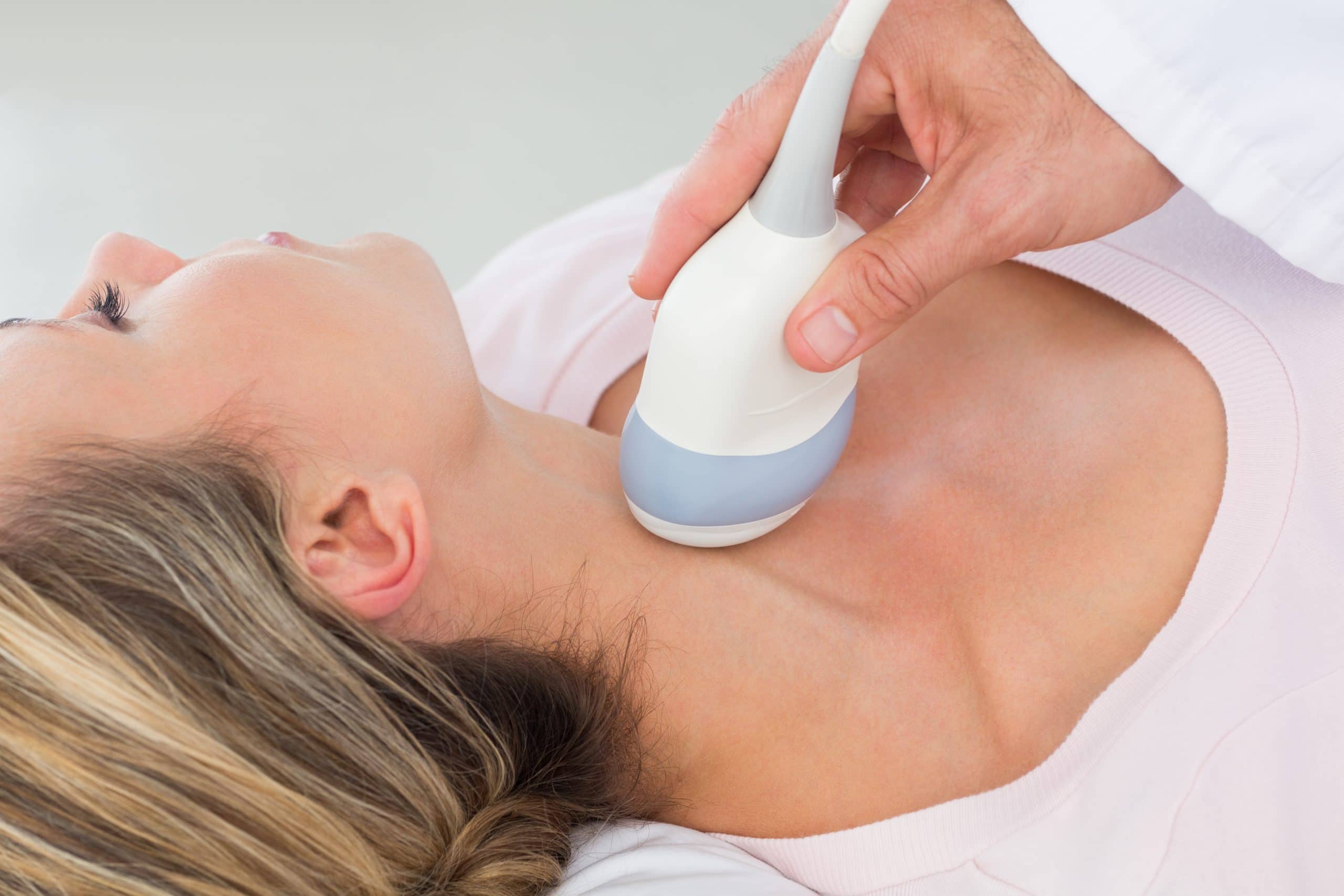The thyroid - a butterfly-shaped organ
The thyroid is a tiny, butterfly-shaped organ located at the front of the neck. It is the driver and clock for our body. It produces several hormones with the main one being thyroxine (also called T4). Thyroid hormones fulfill several crucial functions, like, the regulation of the body’s metabolism, influence on growth and development, as well as the body’s energy balance. Thus, if the hormone production of the thyroid is not working properly, it can disrupt a wide range of processes in the body.
Thyroid nodules are often discovered during routine examinations
A healthy and normally sized thyroid cannot be felt. However, sometimes the gland tissue develops thyroid nodules which can increase to a palpable size and can sometimes even be seen. These nodules are lumps of tissue that form through abnormal cell growth of thyroid cells. These lumps are often discovered during routine examinations or sometimes even identified by the patient.
How common are thyroid nodules?
Thyroid nodules are common: About 4-7% of US adults have a palpable lump and, women are about 4-5 times more likely to be affected than men. Smaller lumps which can be detected through ultrasound are even more common and are found in at least 50% of adults above the age of 60. Despite the high prevalence of thyroid nodules, the good news is that they are almost always benign (noncancerous). Less than 5% of all cases are at risk of being malignant.

What types of nodules exist and how are they different?
Benign thyroid nodules are classified in three categories: hot, cold and normal (or “indifferent”) nodules. These classifications provide information about the hormone producing ability of the nodule tissue. A hot nodule is overly active and produces more hormones than healthy tissue. This can lead to too much hormone being produced and dysregulation of various processes in the body.
How is it diagnosed?The characteristics of cold and indifferent thyroid nodules
On the opposite, cold nodules are made out of tissue which produces none or less hormone than regular thyroid tissue. If these nodules grow too big they can cause symptoms when putting pressure on sensitive structures such as the trachea or gullet. Indifferent nodules do not vary from healthy tissue regarding their hormone-producing abilities. Nevertheless, similar to cold nodules they can also cause pressure symptoms when growing too big. Only 10% of nodules tend to be “hot”, whereas about 40% are normal. The vast majority of thyroid lumps are cold nodules with approx. 50-85% of all cases being cold.
